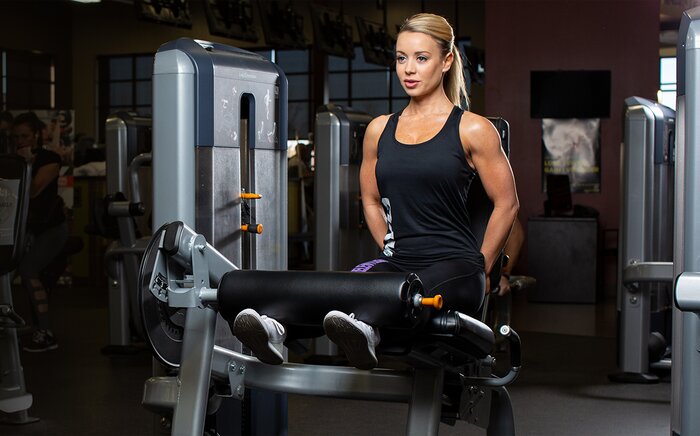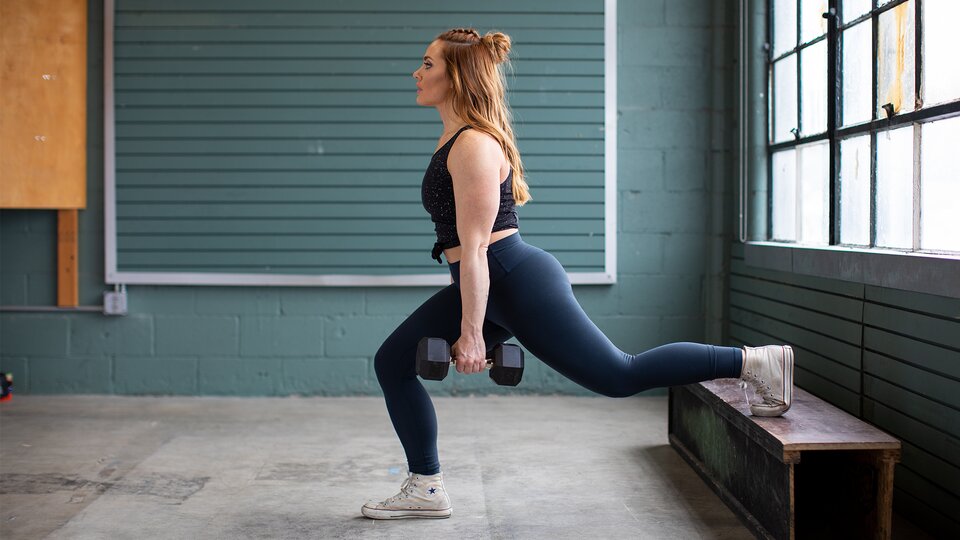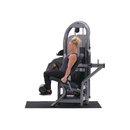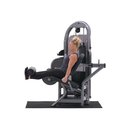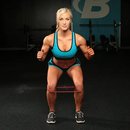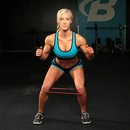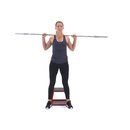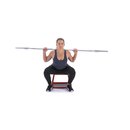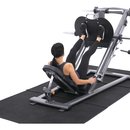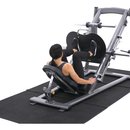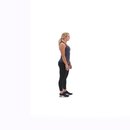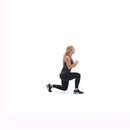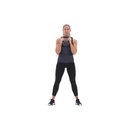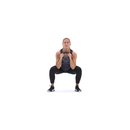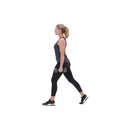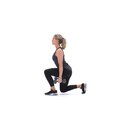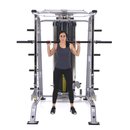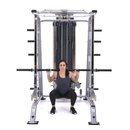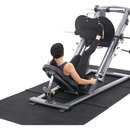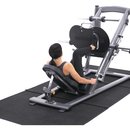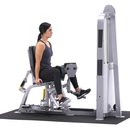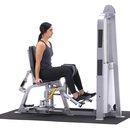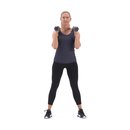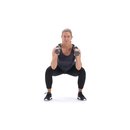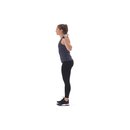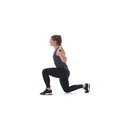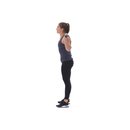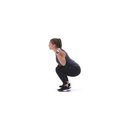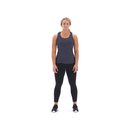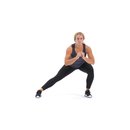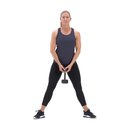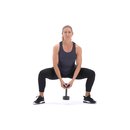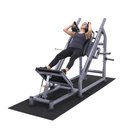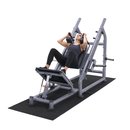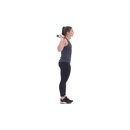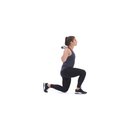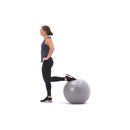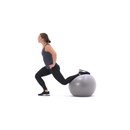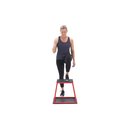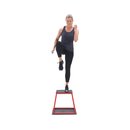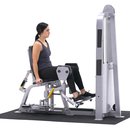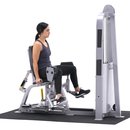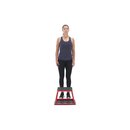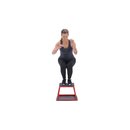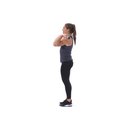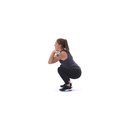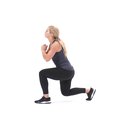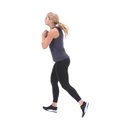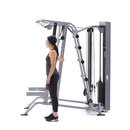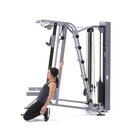Products You May Like
The four muscles that make up the front of the thigh, affectionally known as “the quads,” are currently having a moment. Not coincidentally, it matches up with more women lifting weights—and squatting in particular. But having muscular or strong thighs, something that was once a point of shame for many, has rightfully become a point of pride. Quadzillas unite!
Quads aren’t just there to look tough, after all. They’re integrally involved in every step, jump, and yes, squat that we do. That means they power us through our best workouts, but also through hiking, biking, and playing around in life.
Ready to fearlessly build your quads? These nine workouts from my little black book are what you need.
What do the quadriceps do?
All four muscles of the quadriceps work together to extend/straighten the knee, but they do all have their own unique attributes:
- Rectus femoris: This is the only one of the four that crosses the hip joint. Because the rectus femoris inserts on the iliac spine, it also works as a hip flexor. It also partially covers the other three quadriceps and it is the center muscle we admire on a lean, flexed thigh. Visually, because the rectus femoris crosses the hip, this is the one muscle that can add beautiful detail to an upper thigh.
- Vastus Intermedius, Vastus Lateralis, Vastus Medias: These are the other three quads, and they do not cross the hip but attach to the femur anteriorly, laterally, and medially, as their names suggest. The quadriceps as a group come together and insert on the patella (kneecap) via the quadriceps tendon and also on the tibial tuberosity via the patella tendon. The insertions below the knee is what enables the quads to do their main job of straightening the leg.
- Sartorius: This isn’t one of the quadriceps technically, but it’s worth mentioning in the same discussion. The sartorius is the longest muscle in the body, traveling from the outside of the hip to the inside of the knee and crossing both the knee and hip joints along the way. It works to flex the knee and the thigh, moves the leg outward with rotation, and just helps to keep all the muscles beneath it in place. I mention it here because if you’re lean enough, it is a super pretty muscle to see onstage.
Although their function is the same for all of us, how our thighs appear is as random as the female shape itself. They can be long and lovely with a gap at the top, or short and strong with a sweep that makes skinny jeans hide in fear. Neither is better than the other, of course. Our thighs are certainly the result of our genetics, but also of our hours in the gym.
Genetics aside, your quad workouts should be specifically designed around what you want to create. Don’t be held back by your “grandmother’s knees,” or any other familial excuse. After all, even the most beautifully gifted legs in youth will eventually be ravaged by Father Time. The work we do in the gym will serve us better in the long term than any fancy traits our family might have blessed us with.
So, let’s start optimizing that work by dialing in your goals and digging into the workouts!
Which leg workout is best for me?
Do you want to build mass? Then squatting and presses with heavy weight will be in your future. Do you want to build strong thighs, but with less outward flare and more detail? Then single-leg exercises, lunging movements, and straight foot positioning are a great foundation for your lower-body training. Or maybe you’re a circuit gal, wanting to exhaust your legs with a fast-paced workout using a variety of exercises.
And maybe you read that list and you want to do it all! Well, you can follow one of these workouts consistently for weeks to chase a specific goal, or you can rotate between them, for size, for detail, for pace.
That’s up to you! But no matter what you do, make sure you warm up thoroughly and correctly first.
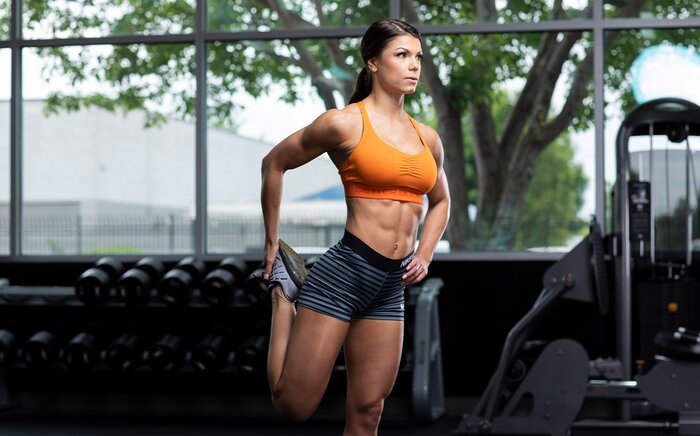
How do I warm up for leg workouts?
Maybe you’ve been sitting down all day, or you just got out of bed, or you’ve been driving around before you get to the gym. In any of these cases, your body is not ideally primed to hit it hard on a major quad movement.
The object of your warm-up is three-fold:
- Get more blood moving through the connective tissue.
- Raise your core body temperature.
- Activate the target muscles so that your joints are in the right position to safely do hard work.
It’s worth remembering that many quad exercises are in fact full-body exercises that require a full-body warm-up. I’m not too worried if you roll out of bed and hit a triceps push-down, but I am concerned if you head straight for the squat rack.
Your warm-up doesn’t have to be complicated, though. You can get on the floor with a roller, jump on the treadmill for a quick jog, or my favorite, do 5-10 minutes of yoga and some light band work.
In your warm-up you should seek to lengthen the anterior pelvis (front of hips) and incorporate some lateral work to activate the hip muscles, which will also help relax the lower back muscles. Why focus on these? Tight muscles negatively impact their opposing partners. Tight hips flexors will stop the glutes and hamstrings from firing properly, and a tight lower back will make it difficult for you to contract your core during a closed-chain squat, press, or lunge.
The Workouts
As in my articles “Shoulder Workouts for Women,” “Back Workouts for Women,” “Glute and Hamstring Workouts for Women,” and “Arm Workouts for Women,” I like to classify training in terms of beginning, intermediate, and advanced lifters. Here’s what those numbers mean to me:
- Beginner: Less than 6 months of consistent weight training
- Intermediate: 1-2 years of consistent weight training
- Advanced: 2 or more years of consistent weight training
I stress the experience level primarily because many women genetically have strong legs and want to jump straight into some pretty advanced moves. As already mentioned, many quad exercises require full-body recruitment, and ladies may feel that their legs can take the pain, but with only a few weeks or months of training, I doubt that their back, shoulders, or core can do the same.
Beginner Workouts
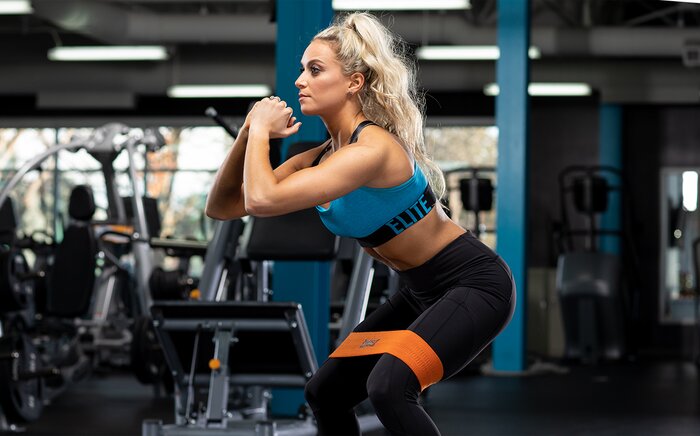
Intermediate Workouts
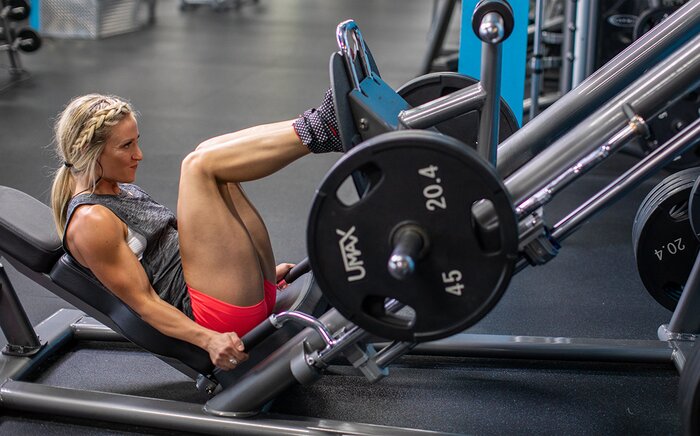
Advanced Workouts
